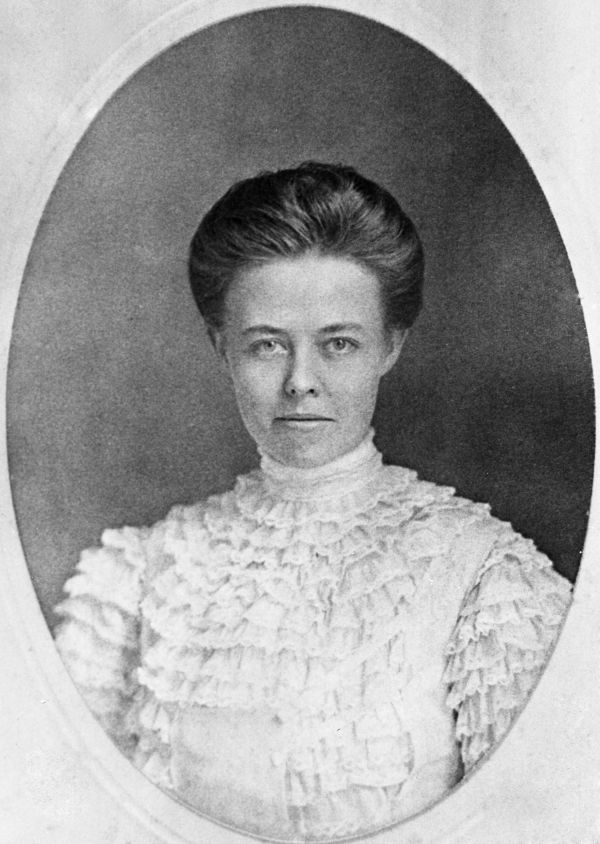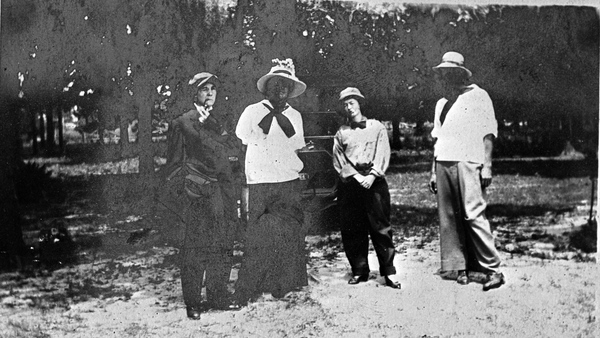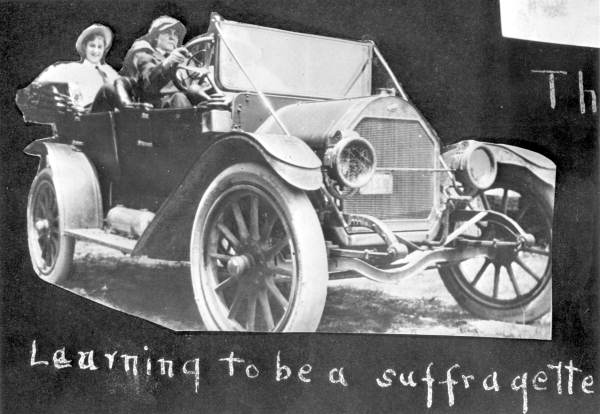Description of previous item
Description of next item
Women's Equality Day
Published August 8, 2014 by Florida Memory
Every year, Florida joins the rest of the United States in celebrating Women's Equality Day. The fight for gender equality in Florida has a long history, with many bumps in the road. In this article we pay homage to the women and men who stood up for equality before the ballot box, even when they faced indifference, outright opposition, or ridicule.
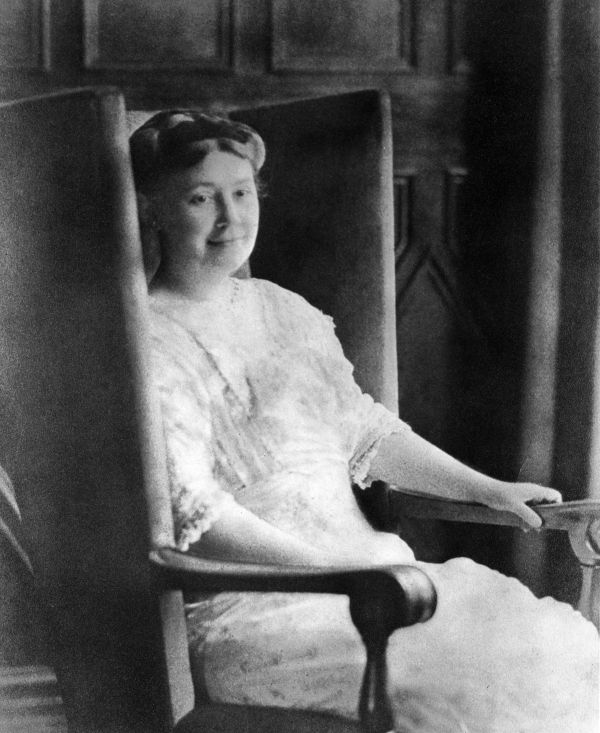
May Mann Jennings, Florida’s First Lady during the administration of her husband, Governor William S. Jennings (1901-1905). Mrs. Jennings was a co-founder of the Florida League of Women Voters (photo circa 1900s).
The movement to secure the vote for women was relatively unorganized in Florida until just before the turn of the twentieth century. Ella C. Chamberlain, who hailed from Tampa, attended a suffrage convention in Des Moines, Iowa in 1892, and returned to the Sunshine State eager to get something going. She sought out space in a local newspaper, only to be directed to write a column on issues of interest to women and children. Legend had it she exclaimed that the world was “not suffering for another cake recipe and the children seemed to be getting along better than the women.” She resolved instead to write about women’s rights, and to deploy the knowledge she had picked up in Des Moines.
Chamberlain was considerably far ahead of public opinion in the Tampa area of the 1890s, but she carried on her work with enthusiasm. In 1893, she established the Florida Women’s Suffrage Association, which associated itself with the broader National American Women Suffrage Association and attempted to inject women’s rights issues into the local political landscape. Susan B. Anthony herself came to know Chamberlain and her efforts on behalf of the women of the Sunshine State. For a number of years, Chamberlain sent Anthony a big box of Florida oranges during the winter as a gesture of appreciation. It was also a ploy to expose the inequality of agricultural wages in Florida between the sexes. Women typically made less than their husbands in this industry, even if they did the same work.
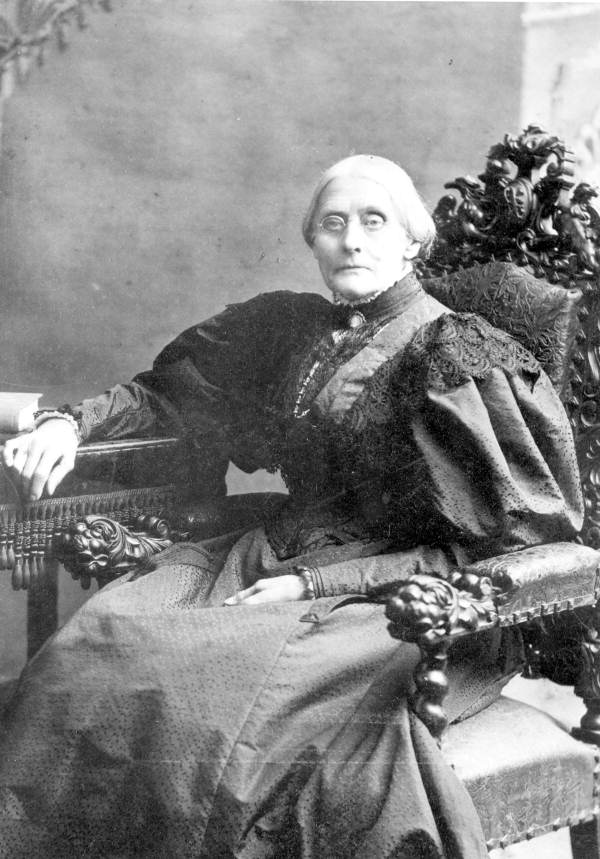
Susan B. Anthony, co-founder of the National Woman Suffrage association, at Rochester, New York (1897).
When Ella Chamberlain left Florida in 1897, the Florida Women’s Suffrage Association lagged and faded out, but the fight for equality continued in smaller organizations around the state. In June of 1912, a group of thirty Jacksonville women founded the Florida Equal Franchise League. Their goals were to improve the legal, educational, and industrial rights of women, as well as to promote the study of civics and civic improvements. The Orlando Suffrage League emerged in 1913, aiming specifically to get women to attempt to vote in a sewerage bond election. When the women were refused, they walked away with a clear example of taxation without representation to use in future debates.
As similar groups began popping up and communicating with one another, the need for a statewide organization became clear. In 1913, the Florida Equal Suffrage Association (FESA) was born at an organizational meeting in Orlando, with the Rev. Mary A. Safford as president and women from across the state serving as officers.
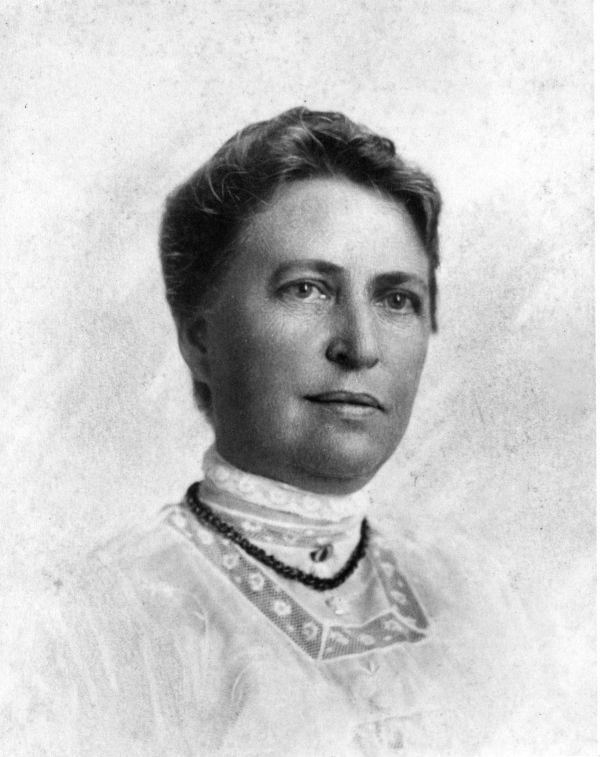
Caroline Mays Brevard, granddaughter of Florida territorial governor Richard Keith Call, noted Florida historian, and a founding member of the Florida Equal Suffrage Association (photo circa 1900s).
FESA and its associates around the state met with mixed success. In Pensacola, for example, where the local newspaper and a number of elected officials were amenable to women’s suffrage, organizers were able to hold meetings and gain a great deal of traction. In Tampa, however, these conditions did not exist and suffrage activists found the road much tougher, at least at first.
As voting rights became a more hotly debated topic across the state and nation, demonstrations on both sides of the issue became more explicit, and admittedly quite creative. The Koreshan Unity, a religious group based in Estero, Florida, put their pro-suffrage stance in the form of a play entitled “Women, Women, Women, Suffragettes, Yes.” The Florida Photographic Collection includes images of both men and women dressing up as the opposite sex, at times to support the idea of equal voting rights and at other times to ridicule it. While humorous, the images are a reminder that for many the suffrage question was often at odds with the longstanding belief that men and women occupied distinct and separate places in society.
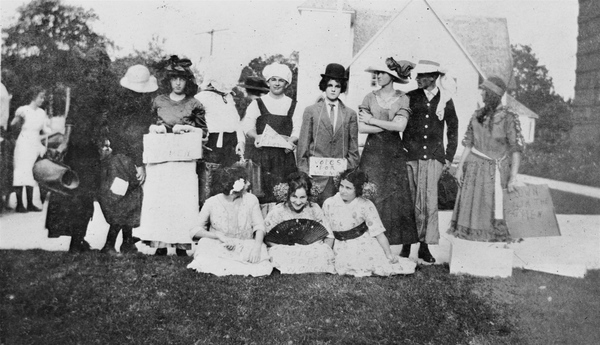
Students at the Andrew D. Gwynne Institute in Fort Myers stage an “international meeting of suffragettes” (photo 1913).
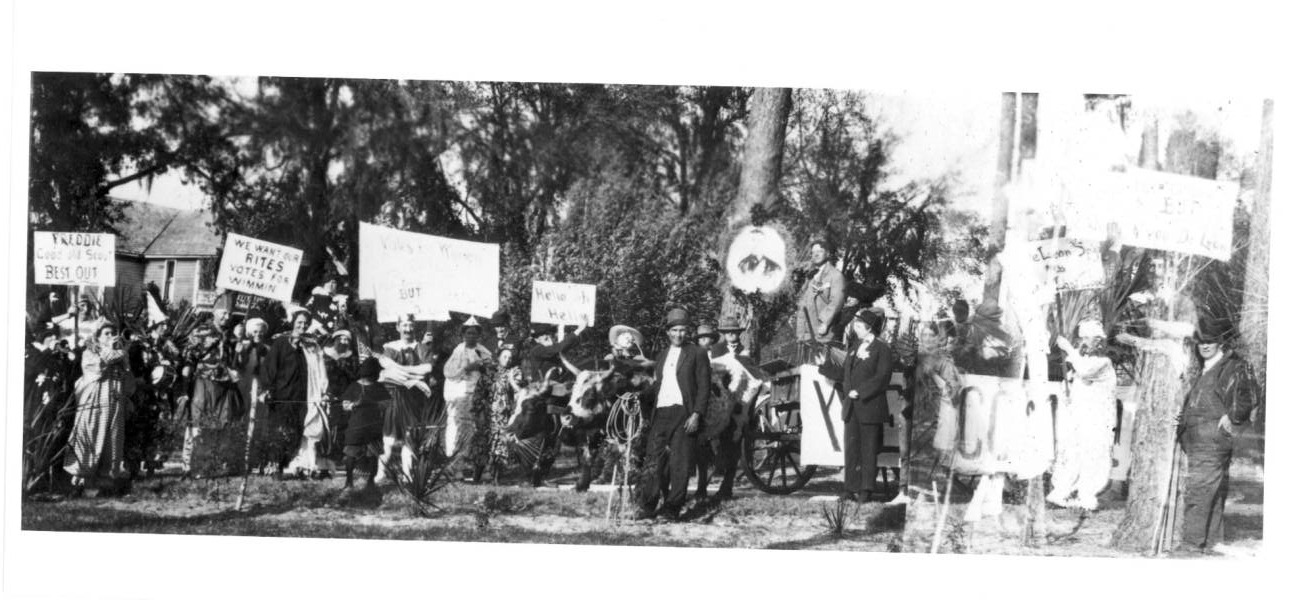
Reception by “DeLeonites” and “DeSoters” at De Leon Springs. Which side of the voting rights debate they are on is not entirely clear (photo 1917).
The 19th Amendment became law on August 26th, 1920, granting women the right to vote. Florida was not one of the states ratifying the amendment, and in fact it did not do so until 1969. Floridian women were undeterred by whatever ambivalence might have caused the delay, however, and women began running for the legislature the very next year. No uproar accompanied the change; the most divisive question was apparently whether women would be charged a poll tax for one or two years, given they had been unable to register the previous year. In time, women began occupying positions of responsibility in all areas of Florida government, although true gender equality was still (and yet remains) an ongoing project.
Women’s Equality Day is an opportunity both to reflect on the past, to celebrate the advances made thus far, and to renew our vigilance in the interest of equal rights regardless of gender. The State Library and Archives of Florida are particularly well-equipped to help you with the bit about reflecting on the past. Check out our recently updated Guide to Women’s History Collections to learn more about the materials we have for researching the history of women in Florida.
Cite This Article
Chicago Manual of Style
(17th Edition)Florida Memory. "Women's Equality Day." Floridiana, 2014. https://www.floridamemory.com/items/show/295209.
MLA
(9th Edition)Florida Memory. "Women's Equality Day." Floridiana, 2014, https://www.floridamemory.com/items/show/295209. Accessed January 7, 2026.
APA
(7th Edition)Florida Memory. (2014, August 8). Women's Equality Day. Floridiana. Retrieved from https://www.floridamemory.com/items/show/295209

 Listen: The Blues Program
Listen: The Blues Program